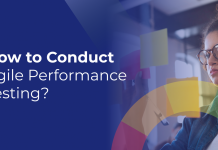
The Scrum Framework is the preeminent Agile Development method in software development and non-technical areas where the term ‘Scrum’ has its roots. The 2020 Scrum Guide accommodates numerous updates and changes that make it the best guide yet. If you haven’t done so already, we have discussed everything regarding the scrum guide as per the updated Scrum Guide 2020. This latest replay is cleaner, clearer, and more comprehensive. Moreover, the updated changes in the 2020 Scrum Guide are expected to drive the culture, focus, and alignment needed to innovate, create, and succeed. Therefore, the CSM certification course provides a thorough overview of the Scrum methodology for agile project management and will prepare you to become a certified Scrum Master. So, let us now look at what is a scrum guide in the next segment.
What is a Scrum Guide?
The Scrum Guide is a formal rule book to execute the Scrum values and fundamentals and has undergone several iterations since its first publication in 2010. Ken and Jeff announced their learnings and ideas regarding the iterative software development lifecycle at the OOPSLA Conference in 1995. However, to subsequently represent these ideas were to the public years later in consolidated formal documentation known as Scrum Guide.
Now, we shall discuss the purpose of the scrum guide.
Purpose of the Scrum Guide?
The Scrum Guide describes scrum, its core values, and fundamentals. Each concept defines in the guide symbolizes an indispensable part of the scrum that serves a specific purpose. Here, the aim is to deliver value and improve outcomes incrementally. Thus, customizing the core values, or eliminating the Scrum rules, limits the overall Scrum profits with useless outcomes at the end of the project deadline.
Scrum is being adopted in many domains holding complex work, apart from software product development, where scrum has its foundation. As scrum adopt spreads, developers, researchers, analysts, scientists, and other professionals do the work. Thus, this guide can find only the basic rules and processes related to scrum. However, they are context-sensitive and can regulate according to shifting organizational prerequisites.
Lastly, scrum is free to use. Therefore, the overall esteem of the Scrum framework written in the guide is unchangeable. The guide aims to set forth the framework lucidly and reduce the unnecessary portions, making it understandable to a larger audience.

Let us first understand what the scum is,
What is Scrum?
Scrum is a framework for developing and lasting complex products. Also, it is the lightweight framework that helps people, teams, and organizations generate value through adaptive solutions for complex problems.
Scrum is simple. Scrum gives you the energy to merge various techniques and methodologies to develop and deliver valuable products. The Scrum framework is intentionally incomplete, only describing the parts required to apply Scrum theory. In addition, Scrum is built upon the collective intelligence of the professionals using it. Rather than provide people with accurate instructions, the rules of scrum guide their relationships and interactions.
A Scrum Master (also known as Agile Coach), similar to the comparison of a team facilitator, is essential to motivate and cultivate the Scrum environment where:
- Product Owner orders a complicated problem into a Product Backlog.
- The Scrum Team involves selecting the work to increment value during a Sprint.
- The Scrum Team and its stakeholders audit the results and adjust for the next Sprint.
- Repeat the process.
Now, let us study the scrum theory
Scrum Theory
Scrum is established on empiricism and lean thinking.
Empiricism defines working based on facts, experience, and evidence. For instance, to create a small transferable product in short cycles, review what and how you have created it. In addition, adapt the product and the way you build it, with built-in mechanisms for transparency to enable clear inspection.
Lean thinking minimizes waste and focuses on the essentials. The waste reduction helps reduce the costs and time spent on it. Lean management helps easily focus on the tasks to improve efficiency by reducing waste like defects, overproduction, unused resources or talents, transportation, excess processing, waiting, motion and inventory.
Scrum is based on an incremental and iterative approach that helps optimize predictability and reduce risks. Skilled persons are grouped in the scrum, and hence collective and sharing work helps improve the quality and efficiency of the work.
Scrum associates four formal events for inspection and adaptation within an accommodative event, the Sprint. These events work because they apply the empirical Scrum support of three pillars of the scrum framework: transparency, inspection, and adaptation.
Transparency
The emergent procedure and work must be evident to those who perform and receive the work. Important decisions are taken based on the three formal artifacts. Artifacts having low transparency can lead to decisions that diminish the value and increase risk. Transparency enables inspection so that proper leading of the tasks can be done.
Inspection
Frequent inspections of the Scrum artifacts and the progress toward the goal are necessary to find problems. Any variances or deviations from the plan should be identified at the initial stages. For inspection, cadence is provided in the form of five events. An inspection enables the adaption as inspection without adaption is pointless. Scrum events are designed for inducing changes.
Adaptation
Any process aspects deviate outside acceptable limits, or the resulting product is unacceptable; it must adjust the applied process or the materials being produced. Also, it must make as soon as possible to minimize further deviation. If people involved in adaption cannot self-manage, it will become difficult. The scrum teams should adapt to the changes learned from the inspection.
Now, we have got an idea of scrum and its theories.
Scrum Guide 2021
Scrum Master: From ‘Servant Leader’ To ‘A Leader Who Serves’
Earlier, Scrum Guides was introduced to two teams: the development team, which means those who have done the work, and the Scrum Team, which incorporates the development team, the Scrum Master, and the Product Owner. This concept of a separate team has sometimes guided to an “us and them” interconnection between the Development Team and Product Owner. There is just one team, the Scrum Team, focused on the same objective, with different liabilities for the Product Owner, Scrum Master, and Developers.
The Scrum Team comprises one Scrum Master, one Product Owner, and Developers. In a Scrum Team, there are no sub-teams or hierarchies. Scrum Teams are cross-functional, which means the members have all the skills necessary to create value for each Sprint. However, the Scrum Team is small enough to remain agile and large enough to complete significant work.
The Scrum Team is liable for all product-related actions from stakeholder collaboration, verification, maintenance, operation, experimentation, research and development, and things that might require. The whole Scrum Team is responsible for creating a valuable, useful increment for every Sprint. In addition, the scrum guide describes three specific accountabilities within the Scrum Team: the Developers, the Product Owner, and the Scrum Master.
Developers
Developers are the Scrum Team committed to creating any aspect of a usable Increment for each Sprint. However, the Developers are always answerable for:
- Building a plan for the Sprint, the Sprint Backlog
- Instilling quality by holding to a Definition of Done
- Accommodate their plan each day toward the Sprint Goal
- Holding each other liability as professionals
Product Owner
The Product Owner is accountable for exaggerating the product’s value. The Product Owner is also accountable for adequate Product Backlog management, which includes:
- Developing and explicitly communicating the Product Goal
- Creating and broadcasting Product Backlog elements,
- Legislate Product Backlog elements
- Assuring that the Product Backlog is transparent, visible, and understood
Scrum Master
The Scrum Master is accountable for establishing scrum. They do this by helping everyone understand Scrum theory and practice to boost its proceeding within the Scrum framework for Scrum Teams and organizations. Scrum Masters are true leaders who will serve the Scrum Team and the organization.
The following are several ways the Scrum Master will help the Scrum Team:
- Train team members to work on self-management and cross-functional abilities.
- Causing the removal of the aroused impediments to the Scrum Team’s progress.
- Assuring that all Scrum events take place and are positive, productive, and kept within the timebox.
- Enabling the Scrum Team to focus on creating high-value Increments that meet the Definition of Done.
The following are many ways the Scrum Master benefits the organization.
- Leading, training, and coaching the organization and the team members in its Scrum fostering
- Planning and advising Scrum application within the organization
- Guiding employees and stakeholders to understand and enact an empirical approach to complex work
- Removing barriers between stakeholders and Scrum Teams
The following are many ways the Scrum Master assists the Product Owner.
- Guiding find techniques for adequate product goal definition and Product Backlog management
- Enabling the Scrum Team to understand the requirement for clear and crisp Product Backlog items
- Helping construct empirical product planning for a complex environment
- Facilitating stakeholder collaboration as requested or needed
Now, we move to understand what is scrum event
Scrum Events
A Sprint is a container for other events. Each event in scrum is an official opportunity to audit and adapt Scrum artifacts. The purpose of the events is to enable the transparency of the tasks. Any failure in event operation will create new problems for inspection and adaptation.
The Sprint
Sprints are the most important in the scrum for turning ideas into values.
These events in the scrum are of fixed length and will be created based on consistency. Once the current sprint is over, the new sprint will be followed. For achieving the product goal, the various involved processes are sprint planning, sprint review, daily scrum, and sprint retrospective.
Sprint is based on the following:
- Accepting changes that will affect the sprint goal is not a smart option
- The quality should not be compromised at any cost
- The product backlog can be feasible as per the requirements
- The scope may be clarified and negotiated again with the product owner
Sprint Planning
The work to be performed in the sprint is initiated and created here. This sprint planning involves the entire Scrum team. The most important product backlog items are discussed along with the product goal. In addition, people can be invited from outside of the team to provide any advice.
Three Sprint Planning Topics
The 2017 Scrum Guide concentrated on the ‘What’ and ‘How.’ Now, we have three equally prime points to cover:- “Why,” “What,” and “How.”
Following are the three crucial questions about Sprint Planning from the Scrum Guide, 2020:
1. Why is this Sprint valuable?
Product Owner introduces how this Sprint could maximize the product’s esteem. Then, the whole Scrum Team describes the Sprint Goal before finishing the Sprint planning.
2. What is the purpose of this Sprint?
Through a conversation with the Product Owner, the developers select items from the Product Backlog to include in the current Sprint.
3. How will the chosen work get done?
The Developers decide how they will apply the Product Backlog items and divide them into smaller lists or tasks.
Also read: What is Sprint Planning Meeting? Definition, Advantages, and Disadvantages
Daily Scrum
Daily Scrum is a meeting occurring for 10 to 15 minutes. Developers and Scrum Master will be attending the meeting to discuss some of the questions. It will occur daily at the same time and place. In addition, the progress towards the sprint goal is inspected, adapting the sprint backlog, and planning the future works are performed in daily scrum.
The main purpose of this scrum meeting is to follow the progress and improve collaboration and communication.
Next, we shall study the questions to answer in scrum meetings.
Answering Three Questions at Daily Scrum Meetings
The three elective questions “What did I do yesterday?”, “What will I do today?” and Are there any impediments? These are removed from the daily scrum. Therefore, the Daily Scrum aims to review the progression of the Sprint Goal and accommodate the Sprint Backlog as essential, adjusting the upcoming planned work.
Sometimes the Daily Scrum recognizes conversations that need to take place beyond the event’s 15-minute timebox. Moreover, the introductory guide stated that these conversations, often called a ‘parking lot,’ occur right after the Daily Scrum. The 2020 Scrum Guide approves the Scrum Team when these important conversations occur.
This change doesn’t mean you can no longer use the above three questions. Instead, this change gives the Scrum Team more flexibility to design their Daily Scrum as long as it enlists towards the progress of the Sprint goal.
Sprint Review
This sprint review needs to understand and inspect the sprint outcome and find the adaptions in the future. The result of the current work and the progress toward the product goal review is here in the sprint review. In addition, any changes that are identified in the sprint will be identified and reviewed.
With new changes and available opportunities, the product backlog adjusts to meet those changes. The time for a sprint review is four hours maximum for a one-month Sprint.
Sprint Retrospective
To increase the quality and effectiveness of the product, a sprint retrospective will be helpful. The scrum team is inspected in a sprint retrospective to understand how the last sprint went. What went well and what did not are studied in this retrospective to solve them effectively.
The helpful changes that could improve the effectiveness of the product are inspected. In addition, the sprint is over after the sprint retrospective. For every one-month sprint, the sprint retrospective will be a maximum of three hours.
Next, we will discuss in detail the Scrum artifacts.
Scrum Artifacts
These serve as a representation of the work or the value. The scrum artifacts maximize the transparency of the important data. Everyone will have the same basis of adaptation.
To enhance transparency and focus, every artifact will have a commitment to achieve.
- The commitment to product backlog is the product goal
- The dedication to sprint backlog is the sprint goal
- The commitment to increment is the definition of done
Product Backlog
The product backlog is the list that describes the required enhancements. The items in the product backlog for the scrum team should be done in one single sprint. Moreover, for refining the activities, the product backlog will be helpful.
Sprint Backlog
The sprint backlog comprises a sprint goal, a set of items in the product backlog, and the plan for delivering the increment. This is a plan by and for the developers where they plan to be highly visible. There should be enough details in the sprint backlog so that daily scrum progress.
Increment
It is the step to achieving the product goal. Every increment is successive to one other and will add to the prior one. The increments are always verified whether they are working together or not. All the increments must be usable. In addition, there may be several increments in the sprint. Therefore, all increments are grouped together and delivered to the customer at the end of the sprint.
Thus, we have got a clear idea on scrum guide by comparing different versions of scrum guide that are available.
Conclusion
Compared to the 2017 version, these commitments and artifacts weren’t mentioned. However, the 2020 version has stated them as commitments wrapping one important scrum artifact. This change has shifted the focus and proposed transparency to all the three artifacts listed above. Moreover, to learn more about scrum or discover how to implement it seamlessly, individuals and enterprise teams should consider pursuing widely-recognized certification programs for Scrum Masters. Therefore, Invensis Learning provides live online CSM Certification Training. Learn more about the Scrum Guide and the changes with its iterations, and enjoy the benefits like any aspiring professional.

















